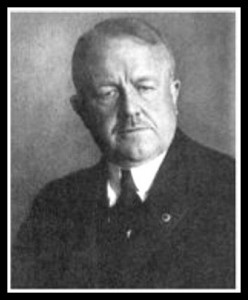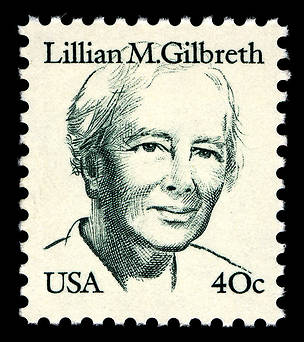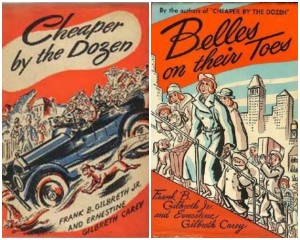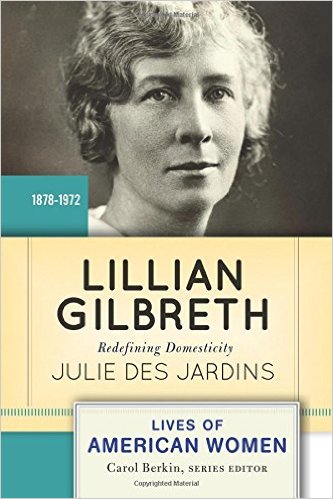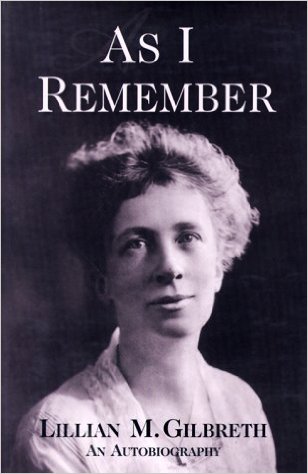Lillian Gilbreth should be remembered for any of her life accomplishments: psychologist, industrial engineer, author, inventor, and pioneer in the field of industrial psychology. From her collection of degrees to her equal partnership marriage to her work with Presidents and to the trailblazing example she set for us modern mothers…she should be remembered for a lot more than simply, “the mother on Cheaper by the Dozen”.
Let’s do something about that.
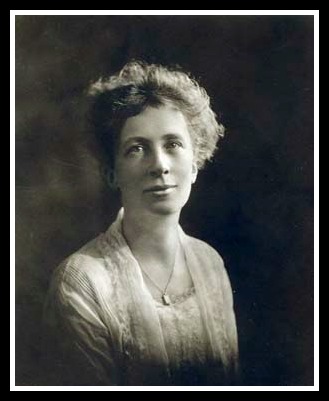
Lillian Gilbreth, circa 1920s, Courtesy Frank and Lillian Gilbreth papers, (MSP 7, Box 126, Folder 4) Archives and Special Collections, Purdue University Libraries
Lillie Evelyn Moller was born on May 24, 1878 into a wealthy Victorian family in Oakland, California. Papa Willie and Mama Annie had lost their first child and were a bit, let’s just say “nervous and overprotective” of little Lillie. Two anxious parents led to a very anxious child. Lillie was smart and solitary, although very shy. So shy that she was educated at home because she refused to attend school.
Not that her parents didn’t try. They were caring, let her read whatever she wanted, made sure she kept up with her studies and tried to get her to go to school…which was a fail until they finally got her into a class of younger children. Although she was a tad awkward she stayed at school one day and went back the next, and the next–success!
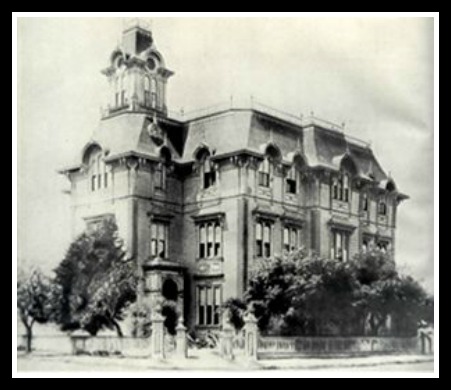
Oakland High (this building was in use until the year before she graduated…with Jack London…how about that?)
Courtesy OHS History-Gertrude Stein went there, too!
Lillie found her tribe in high school, she also found a mentor in one of her teachers who showed her that her future could be more than a copy of her mother’s; that she could pursue a career and marriage and home was only part of the future she could have.
Since Lillie was pretty certain she wasn’t going to be following an MRS track anytime soon, she got her parents to agree to send her to college. (They may have believed that it was a path to motherhood for her, but let them, right? They didn’t have to know that avoiding that very thing was more the goal.) The University of California, Berkeley, was within commuting distance and Lillie set off to learn to become a teacher.
Lillie ROCKED college. Simple as that. She was making friends and even the men she knew said that they didn’t consider her brains a handicap. Er, what? *sigh* We’re sure they meant well. At her graduation in 1900 she was the first woman to give a commencement address in the school’s history.
Lillie was a woman, transformed. She was so transformed that she dropped the childish, “Lillie” for a more sophisticated, “Lillian”. She was killing it in the land of Academia! More! First her masters and before she started work on her doctorate she took a little vacay. The destination was Europe; the souvenir was love.
Between California and her Grand Tour, in one of those romantic opposites attract situations, she met Frank Gilbreth. Their marriage wasn’t just a traditional love match, it was also a business pairing. He had an established construction business that was built (oh, sure, pun intended) on his ability to streamline production through studies of how workers moved– motion studies. She was able to help with business organization while she continued her education. They lived with Frank’s mother and aunt who were very gifted in the home arts, which was great because Lillian wasn’t.
Lillian and Frank began to have children fairly quickly and between 1905 and 1922 she gave birth to their planned full dozen, although one girl died in early childhood. Lillian also began to steer her education toward combining engineering and psychology and became a pioneer in the field of Organizational Psychology. (This really is the fast-forward version, you should listen to the podcast for all the juicy bits.)
Together Lillian and Frank were an amazing business team: She brought a human element to Frank’s very scientific motion studies. How did workers work? What motivated them? While he was streamlining workers tasks, she was advising on the best psychological ways to make them more productive and together they were looking to find the one best way to do anything. She wrote the books and the papers (all while being home with the children) and he worked directly with heads of industry and conducted motion studies specific to each company.
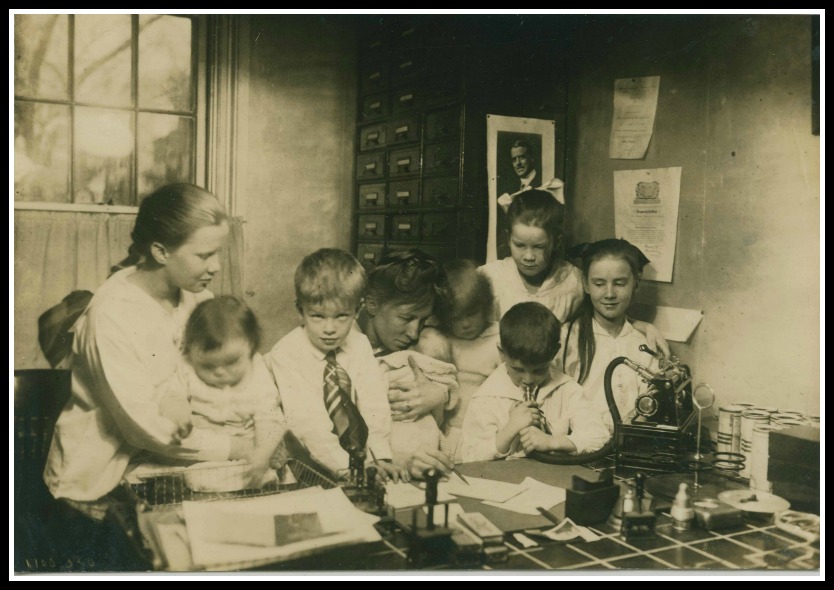
Every mom who works from home can relate. Lillian Gilbreth with eight of her children, undated. Frank and Lillian Gilbreth papers, MSP 7, Box 115, Folder 1, Courtesy Archives and Special Collections, Purdue University Libraries
And all those kids? They helped, too. Both parents were very busy with the business, so each child had responsibilities at home and the kids were often testers for efficiency theories. Not only did Frank and Lillian work as a team, the whole family did.
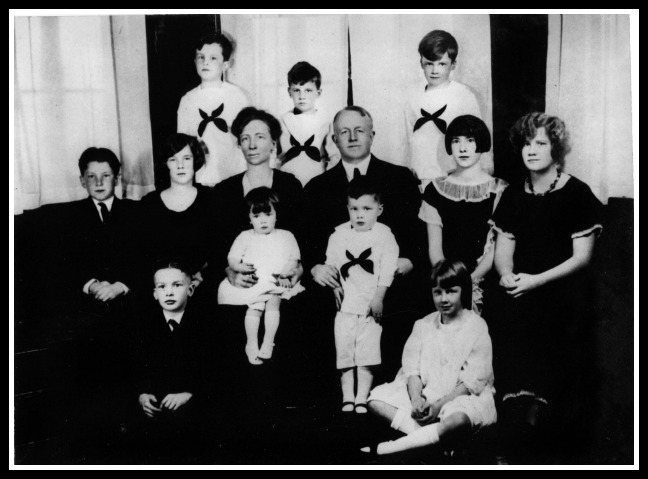
Team Gilbreth! The whole family (11 kids, this was after little Mary passed away) circa 1910-1920 Frank and Lillian Gilbreth papers, MSP 7, Box 114, Folder 6, Courtesy Archives and Special Collections, Purdue University Libraries
When the US entered WWI the Gilbreths helped returning and injured veterans relearn their jobs with new physical limitations, and they helped women enter the workforce in the absence of men.
We do go into a lot more detail in the podcast, a lot more about the family, how they functioned; a lot more about Lillian and Frank’s work but their unique relationship ended when, in 1924 right before his 56th birthday when he would have received the biography Lillian wrote about him- Frank died of a heart attack.

From Beckett’s gift book to her husband. (See? If you listened to the episode this would make sense.)
A single mother of 11 who was an expert in her business field was quite a curiosity and she rode a little wave of publicity to keep things afloat. But afloat wasn’t enough and sexism entered the picture in a big way. She lost some of their long term bigger clients simply because she was a woman; she was denied entry into professional organizations simply because she was a woman.
But because she was a woman she was able to offer a unique perspective about the primary purchasing decision makers: women. From retail to manufacturing to home economics she was able to target her skills, experience and hard-earned knowledge toward anything women touched. She traveled to speak,wrote books, consulted with some of the biggest companies of the time and helped homemakers work more efficiently and treat their work like paid work. But that wasn’t all she did: She was appointed to committees by President Hoover, helped organize women during the depression, launched public service campaigns, helped form the WAVES and the WACS, helped industry bring women employees on board during WWII and she was a college professor teaching others what she knew.
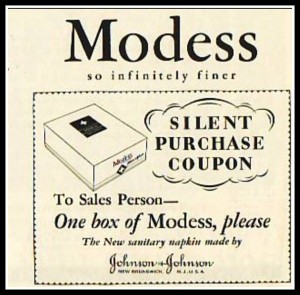
Lillian’s market research at work! Women were embarrassed to ask so this request was simply passed over the counter.
We can thank her for-among other things- the efficient kitchen design we now use, the doors in our refrigerators, the height of our kitchen counters, the organizer on the back of our utility room doors, a number of handicapped accessible features in architecture, and the step trash can.  Lillian worked until the children all went to college, she worked as they had families of their own and she worked while two of them wrote a book that would propel the family into the American pop culture: Cheaper by the Dozen.
Lillian worked until the children all went to college, she worked as they had families of their own and she worked while two of them wrote a book that would propel the family into the American pop culture: Cheaper by the Dozen.
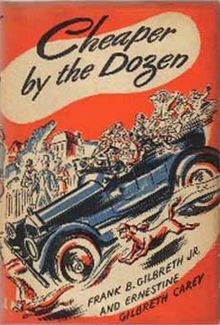
It was BASED on fact, and her role was largely glossed over in favor of shining the spotlight on Dad.
Even with the resulting (moderately inaccurate) fame Lillian didn’t slow down her schedule. She continued to consult, speak and teach well into her 80s. She stopped at 90 only because her health was declining and her doctors insisted on it.
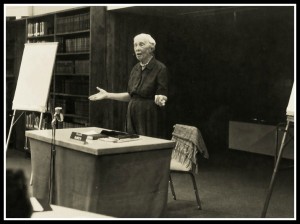
Lillian Gilbreth teaching, 1966 Frank and Lillian Gilbreth papers, MSP 7, Box 118, Folder 3, Courtesy Archives and Special Collections, Purdue University Libraries
The last few years of her life Lillian’s health grew rapidly worse. The once bold and innovative powerhouse of productivity was confined to bed a shadow of her former self and on January 2, 1972, she died of a massive stroke at 94.
Time Travel with The History Chicks
Websites!
The EngineerGirl website is (a service of the National Academy of Engineering) designed to help spark interest in girls to pursue careers in Engineering. Meet women engineers, discover fields of engineering, learn and get linked up to even more sites to dive deep into a career a lot like Lillian’s.
Lillian is in the MUM…always a great day when we can send you to the Museum of Menstruation.
The Gilbreth Network bills itself as “The most efficient destination for all your Gilbreth research.” (See what they did there?) Go there to read about the family and see more photos. It doesn’t appear to have been updated recently, but there is a lot of really cool stuff in there.
Purdue University, Frank and Lillian Gilbreth e-archives. RABBIT HOLE WARNING!
The lovely people at Purdue would like you to know that Lillian Gilbreth and Amelia Earhart, “… were both hired by the University president in order to inspire women students to go beyond the roles traditional ascribed to them. The Gilbreth papers contain photographs, manuscripts, research notes, correspondence, and clippings, and anyone is welcome to visit the Archives to do research with these materials. “
Cheaper by the Dozen house IS the Meet Me In St. Louis house! This blog post (at derekmdesign.blogspot) gives you a side-by-side comparison of both movie sets.
Do not forget to check out Beckett’s amazing Lillian Gilbreth Pinterest board!
Books! Movies!
Of course you want to read the two books written by Gilbreth “kids” and see the movies they inspired, but by now you think of Lillian as more than the mom in Cheaper by the Dozen and know that they don’t give a very accurate portrayal of her ( you do, right?).
You want to watch some of Frank and Lillian’s motion study films? This one shows how Frank got started in the construction business:
And here is the beginning of a series that will show you more. (Click through to YouTube to find the rest.)
TOYS! Classic Legos, of course, but how about a newish line of construction toys that, “…aim to disrupt the pink aisle and inspire the future generation of female engineers?” We both thought these were a pretty exciting addition to the toy aisle and admired the mission of the company (plusthey have really fun commercials).
This episode is brought to you by The Message, an original science fiction podcast by Panoply and GE Podcast Theater.


